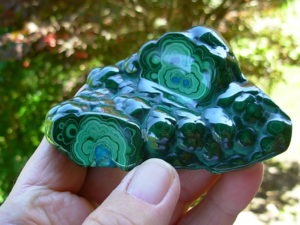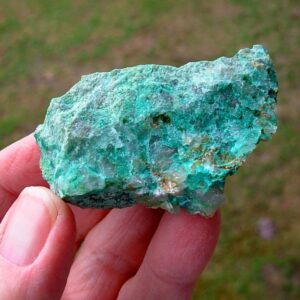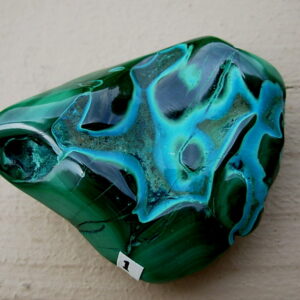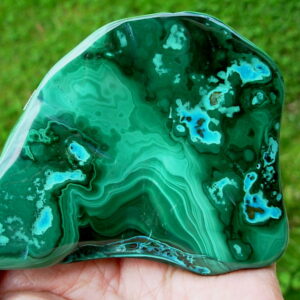Malachite and Chrysocolla
 Chrysocolla (hydrated copper silicate) is a mineral, or more correctly classified as a mineraloid. It is of secondary origin and forms in the oxidation zones of copper ore bodies. Associated minerals are quartz, limonite, azurite, malachite, cuprites, and other secondary copper minerals.
Chrysocolla (hydrated copper silicate) is a mineral, or more correctly classified as a mineraloid. It is of secondary origin and forms in the oxidation zones of copper ore bodies. Associated minerals are quartz, limonite, azurite, malachite, cuprites, and other secondary copper minerals.
Chrysocolla has an attractive blue-green color and is a minor ore of copper. It is typically found as glassy botryoidal or rounded masses and crusts, or vein fillings. Because of its light color, it is sometimes confused with turquoise. The name comes from the Greek chrysos, "gold", and kolla, "glue", in allusion to the name of the material used to solder gold, and was first used by Theophrastus in 315 BC.
Malachite (Copper Carbonate Hydroxide) is a famous and very popular semi-precious stone. It is named for the Greek word for "mallow", a green herb. Its banded light and dark green designs are like no other, and give it a unique appearance unlike that of any other stone. The light and dark green bands are so distinctive that malachite maybe one of the most easily recognized minerals in the world.
Many beautiful specimens of malachite contain special combinations with other minerals. Such combinations are some of the most colorful mineral assortments in the mineral world. They include such stunningly colorful minerals as dark blue azurite, sparkling black mottramite, blue chrysocolla, or rusty red limonite. So common is malachite that it is associated with almost every secondary copper mineral whether they are carbonate minerals or not.



